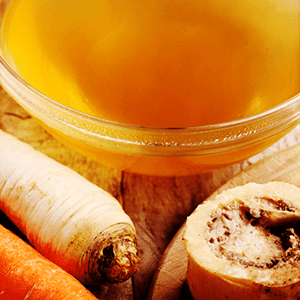Eat Your Way to Joint Health: Do’s & Don’ts for Optimal Joint Nutrition
In a hurry? Click here to read the Article Summary...
Of all the parts of “you” that need attention and care, joint health is sometimes the most overlooked − despite being among the most important. After all, without properly working joints, we can feel as stiff as the Tin Man in the Wizard of Oz (before he got oiled up by Dorothy!)
Our joints enable us to move, bend, stretch, walk, and do a million other actions throughout our day. Strolling in nature, doing your morning stretches, playing baseball, even bending down to tie your shoes, pick up the grandkids, or pet the dog all involve your joints.
Doing all of these activities without pain and stiffness requires action, especially as we age, to keep our joints limber, flexible, and healthy. And one of the most important factors in determining the health of your joints is what and how you eat on a daily basis.
The Joints: More Than Just Bone and Muscle
 Here’s a fun fact: there are 360 joints in the human muscular-skeletal system but prior to the 1950s it was believed that there were only 340. Then 20 more were discovered in the ear area alone!
Here’s a fun fact: there are 360 joints in the human muscular-skeletal system but prior to the 1950s it was believed that there were only 340. Then 20 more were discovered in the ear area alone!
This little tidbit of information exemplifies the sheer complexity in which nature has created the myriad of ways for us to stretch, bend, walk, and move. So it goes without saying that there is a lot more to the joint areas of our body that just bone and muscle.
There are close to a dozen different kinds of joints in the body, each designed for a certain type of movement.
What Are Synovial Joints?
The most common kind of joints found in the human body are called synovial joints.
A synovial joint has a space between the bones that is filled with fluid called synovial fluid. The lining of each bone on either end of the fluid-filled space consists of smooth cartilage and surrounding the entire joint is a “capsule” of connective tissue and a “synovial membrane.” Ligaments help to protect and reinforce the joint, limiting hyperextension of movement.
Synovial joints consist of gliding, hinging, “saddling,” and ball and socket joints and include areas of movement in the knee, the shoulder and dozens of other locations.
Synovial joints allow for some of the widest range of movements. Because of this, they often experience the most wear and tear as we get older.
One of the most common (and also one of the most painful) conditions that can plague the joint areas of the body is osteoarthritis. According to the U.S. Centers for Disease Control and Prevention, there are currently over 30 million Americans who suffer from osteoarthritis of some kind. Approximately 10% of men and 13% of women over 60 have osteoarthritis of the knee in particular.
Eat Your Way to Good Joint Health
 When Hippocrates said “Let food be your medicine and medicine be your food,” he was referring to how sound nutrition can lead to health in the body as a whole. But this statement can especially apply to joint health.
When Hippocrates said “Let food be your medicine and medicine be your food,” he was referring to how sound nutrition can lead to health in the body as a whole. But this statement can especially apply to joint health.
Numerous studies have pinpointed the best foods to eat to keep your joints healthy, your synovial fluid robust, and the cartilage between your bones in ample supply.
Here are just a few of the dozens of joint-healthy and (not-so-healthy) foods to keep in mind when you are aiming for promoting good joint health or to prevent joint degradation down the line.
Let’s start with the Don’ts − the “not so good for you” foods first. Then we’ll come back around with Do’s − 3 foods that are “must haves” for not only joint health, but are also necessary for all-around vibrant living.
The Dont’s: 2 Foods to Avoid if You Want Good Joint Health
#1: Sugar and Simple Carbs.
There is such a thing as the “sugar aches.” You might even have experienced this… You indulge in a fluffy yet sugar-filled coffee shop muffin and 30 minutes later, your muscles and joints just feel stiff. You may even experience pain in your knee, a cramp in your shoulder, or a full-on headache.
There is a reason for this. A 2002 study conducted by Harvard Medical School found that levels of C-Reactive Protein (which is a marker for overall inflammation in the blood and body) was raised considerably in otherwise healthy middle-aged women who consumed a high amount of sugar or simple carbohydrates on a regular basis. Inflammation in the body has been linked to a breakdown of joint cartilage and, over time, can lead to arthritis.
#2: Processed foods.
Similar to commercial sugar and simple carbs like the ones mentioned above, other ingredients found in processed foods can also lead to inflammatory responses − especially in the joints.
Many highly-processed foods contain trans fats such as hydrogenated or partially-hydrogenated margarine and refined vegetable oil, in addition to chemical additives and preservatives.
These chemically-altered ingredients have been linked to inflammation as well as oxidation in the body. Oxidation in the joint areas (especially in the knee) is correlated with high amounts of nitric oxide, which has been shown to inhibit the production and functioning of collagen as well as proteoglycans found in connective tissue.
The Do’s: 3 Healthy-Joint Foods to Add to Your Diet
#1: Bone broth.
When famed dentist and nutritional researcher Weston Price visited the native people of the Rocky Mountain range in Canada, he discovered them to be some of the healthiest people he had encountered. He attributed their sound physiques, flexible bodies, and healthy appearance in part to their consumption of bone broth.
Besides having beneficial effects on the immune system and the gut, bone broth sourced from organic, grass-fed chicken, beef, lamb, wild game, or fish has been proven by Dr. Matthias Rath and others to support the health of connective tissues, in particular because of the natural collagen that it contains. In addition, bone broth contains chondroitin sulfate, which has been shown to support good joint health.
#2: Healthy Fats.
Consuming too much omega-6 hydrogenated cooking oils (such as corn oil and soy) as well as trans-fat loaded margarines can cause an increase in enzymes which spur inflammation in the joints.
Healthy oils, especially those containing omega-3s such as olive and fish oils, has been shown to reduce inflammation. In fact, a UK study published in the Journal of Biological Chemistry discovered a direct correlation between omega-3s found in fish oils and the downgrading of “inflammatory factors that can cause cartilage destruction in arthritis.”
#3: Whole foods.
Organic green leafy vegetables and other low-starch veggies, fresh, all-natural grass-fed meats, and good sources of fat − basically whole foods that you prepare yourself using the freshest ingredients − is really the best way to go when you are eating for joint health.
In addition, eating whole foods in a calm environment versus rapidly consuming processed foods on the run will also keep inflammation levels down. Reducing stress levels will help to kick in the healing associated with the “relaxation response” in the body. In this state, pain and discomfort as well as factors associated with joint disease have been shown to significantly reduce.
Keeping Joints Flexible Through Movement
These short nutritional pointers are just the tip of the iceberg when it comes to what you can do to make sure all of your “joint parts” (including bone, muscle, cartilage, and synovial fluid) are working together in a healthy way.
Another factor that MUST be considered for good joint health is movement. Our joints allow us to move, but we have to use them in order for them to keep serving us in the way they were meant to. (The phrase “use it or lose it” definitely applies here!)
Movement in the form of both light aerobic exercise and light resistance training increases blood flow, prevents oxidative stress, works muscles, and keeps things “flowing.” Exercise also helps maintain a healthy weight which in turn relieves extra stress on the joints.
If you add movement to your daily routine (many experts say a minimum of 30 minutes, 3 times a week) to your established healthy eating habits, your odds are greatly improved that the painful epidemic of osteoarthritis that plagues so many Americans will not have an effect on you!
Organixx Clean Sourced Collagens blend contains five types of collagen from four sources. What’s more, it’s combined with targeted nutrients such as zinc, vitamin C, and vitamin B6 which specifically enhance the bioavailability and potency of collagen. Clean Sourced Collagens is formulated from the ground up to enhance and support your body’s natural ability to heal and rebuild itself from the INSIDE out.

 Sources:
Sources:
Article Summary
Our joints enable us to move, bend, stretch, walk, and do a million other actions throughout our day.
One of the most important factors in determining the health of your joints is what and how you eat on a daily basis.
The most common kind of joints found in the human body are called synovial joints. They allow for some of the widest range of movements and often experience the most wear and tear as we get older.
If you want good joint health, avoid sugar and simple carbs as well as processed foods.
3 healthy-joint foods to add to your diet:
- Bone broth
- Healthy fats
- Whole foods
Movement in the form of both light aerobic exercise and light resistance training increases blood flow, prevents oxidative stress, works muscles, and keeps things “flowing.”





I would like to know if the bone broth you use would allow someone to take it if they are allergic to chicken and beef?
Same characters?
Thank you
Hi Karla,
Thank you for your interest in our Bone Broth.
Due to the product being derived from chicken and beef it is not recommended that you use this product if you have allergies to chicken and beef. Please speak with your trusted healthcare provider for more information on this subject.
Thank you! Enjoy your day!
i really would like to hear from someone that is taking this for knee pain. does this really work ???
Is collagen hydro LSU’s ate powder ( pasture raised in grass fed ) similar in benefit to bone broth?
Hi Leslie. Unfortunately, we cannot comment nor discuss about supplements that are not a part of the Organixx brand. If you would like to learn more about our Bone Broth Protein, you may read more about it here (https://organixx.com/bone-broth-protein/).
What do you have for Vegan joint health. They are many of us and we are abedended by many health products selling companies.
Hi Lydia. You may want to check out our Turmeric 3D, a vegan turmeric supplement derived from organic turmeric root that can help balance your body's inflammation response. Furthermore, it contains curcumin, which can help maintain healthy joints. You may click on these links to learn more: https://organixx.com/turmeric-3d/ and https://support.organixx.com/751544-Turmeric-3D.
Thank you.